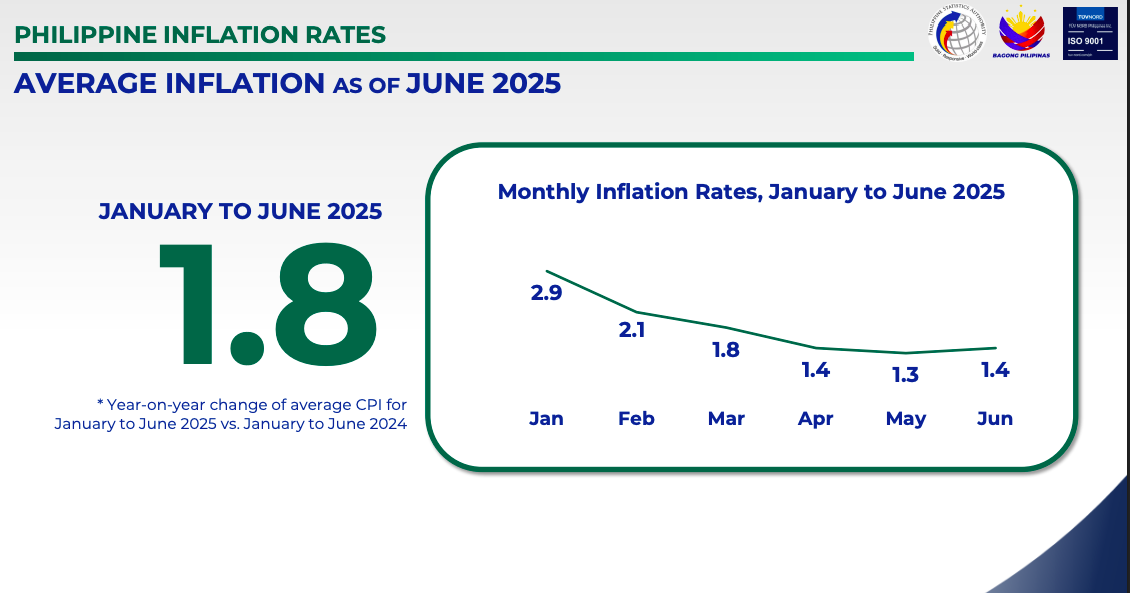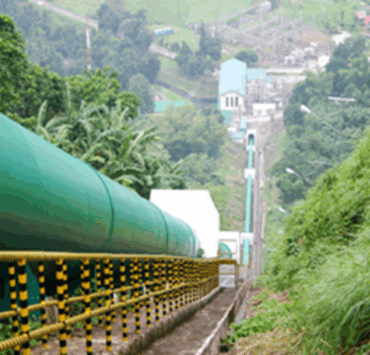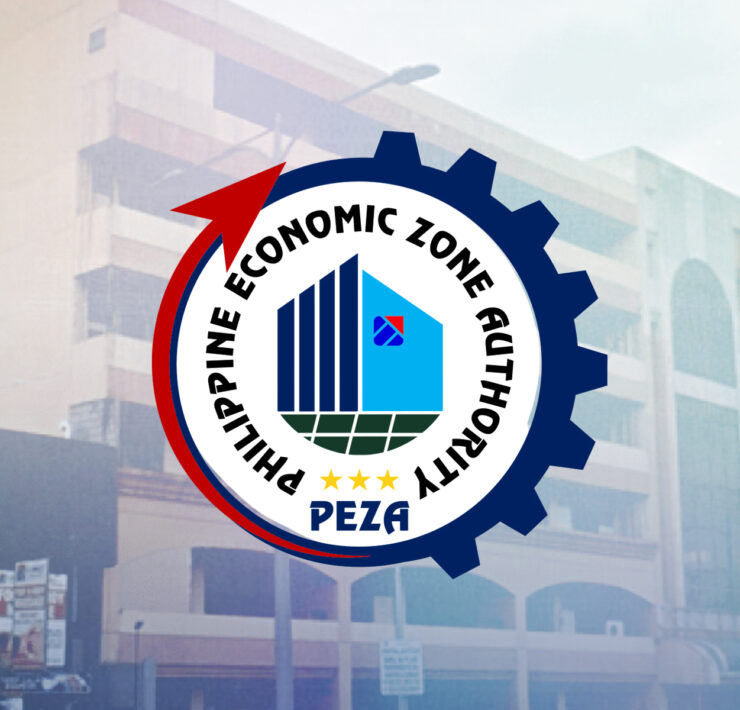Drop in rice prices keeps lid on inflation

With prices of staples such as rice falling at their steepest since 1995, inflation has remained within target, inching up to 1.4 percent year-on-year in June, according to the Philippine Statistics Authority.
The June rate of increase in the prices of goods that the average household commonly buys was a significant slowdown from the 3.7 percent recorded in the same month last year.
The latest readout brought average inflation for the first semester of 2025 to 1.8 percent.
This is below the target range of 2 percent to 4 percent, within which the Bangko Sentral ng Pilipinas wants to shepherd inflation.
National Statistician Dennis Mapa said in a press briefing on Friday that for staples like rice, prices have fallen at their steepest—14.3 percent—since 1995.
Mapa said they expect inflation for rice alone to be negative until the end of this year.
“But, there are items like meat and fish, where rate of price hikes are high. We are looking at that, plus the impact of the transportation index via oil prices in the world market,” he added.
The Philippine government is thus doubling down on interventions to help ease price hikes for basic goods, now adding emphasis on nonfood items.
PSA data show that a main driver of inflation in June was faster price hikes in nonfood goods.
In particular, the index of housing, water, electricity, gas and other fuels rose to 3.2 percent last month. This compared with 2.3 percent in May.
Another major driver was the slower annual decrease in the transport index. This logged at -1.6 percent in June from -2.4 percent in May.
“The sharp decline in food inflation over the past year underscores the continued progress in our coordinated efforts to boost local production, improve logistics, and implement calibrated trade and biosecurity measures,” Economy, Planning, and Development Secretary Arsenio Balisacan said in a statement.
“We will sustain these interventions and complement them with targeted initiatives to ensure a continuous, stable supply and shield consumers from future price pressures,” Balisacan said.
He added that, to further strengthen food supply chains, the Department of Agriculture will intensify the implementation of industry recovery and expansion programs, such as the Swine Industry Recovery Project and Livestock Economic Enterprise Development.





















